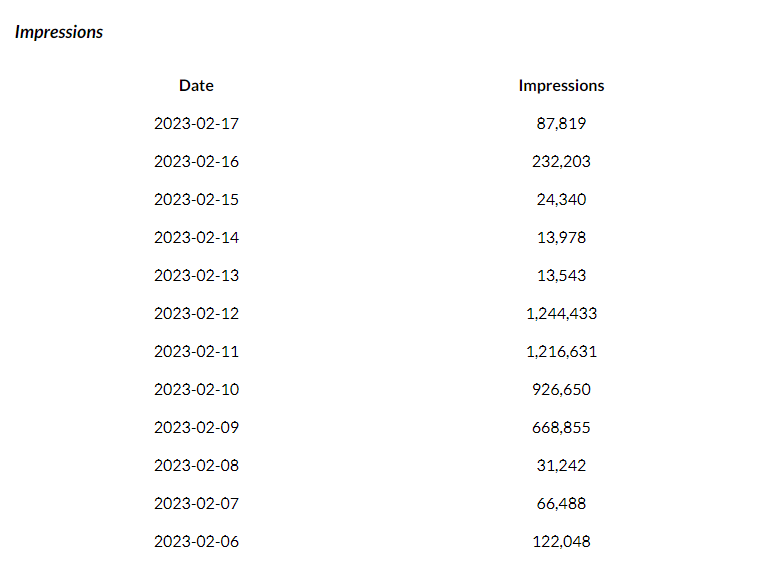Top 5 Affiliate Marketing Trends of 2024: Another Dimension of Familiar Verticals

This post is also available in:
PT
ES
Staying ahead in affiliate marketing means riding the tide of the hottest trends. As we bid adieu to 2023 and welcome 2024 with open arms, there’s no better time to revamp, re-strategize, and rediscover the power of innovative marketing strategies.
This article isn’t just about listing trends — it’s a curated guide to seize opportunities backed by facts, figures, and actionable insights. Whether you’re a seasoned marketer or a newbie testing the waters, we’ve got something to light that motivational spark.
Dive in to unravel the secrets of leveraging these trends, peppered with pro tips and success stories, ensuring your campaigns are not just good but spectacularly successful!
Trend 1: iGaming Offers – Fantasy Sports, AFL, and More
Summer may not be the most action-packed time for sports, but autumn sure makes up for it. As the leaves turn brown, major sports leagues roar back to life:
- August witnessed the onset of the 2023-2024 regular seasons across major football leagues — and the trend will remain hot in November and December as well.
- September alone boasts of grand events like the AFL Grand Final and the initiation of the 2023-24 NFL season.
- October shines with the Cricket ODI World Cup and the commencement of the 2023-24 MLB, NHL, and NBA regular seasons.
The cherry on top? The Fantasy Sports market in the US is projected to grow by a staggering $9.84 billion by the end of 2023. A special glance into a recent case study elevates this optimism.
Fantasy Sports Case Study Snapshot
- Offer: Fantasy Sports App tailored for the US audience.
- Campaign Duration: NFL season 2023
- Traffic Type: PropellerAds Popunder ads, primarily targeting iOS users.
- Achievements: Garnered a whopping 2 million pertinent users and clocked in an enviable monthly revenue surpassing $7,000.
- Insights: The peak of the profit was in February — before and during the Super Bowl — NFL finals.

Given the strong combination of real-world sports events and the enticing world of fantasy sports, the returns promise to be significant.
Pro tip: Blend in some gaming offers with your sports-related campaigns for enhanced returns. With results like the aforementioned case study, the evidence is clear: autumn is prime time for iGaming affiliates.
How to Run iGaming Offers in 2024
The iGaming industry, having scaled to $61.5 billion in 2021 and forecasted to reach $114.4 billion by 2028, showcases an expansive landscape for affiliate marketers to tap into. To ensure you leverage this potential to the fullest, consider the following refined strategies:
- Know Your Audience: With a myriad of offers ranging from sports, online gaming, fantasy sports, eSports, and raffles to card games, it’s important to find your best-performing niche by testing diverse offers.
- Harness Organic iGaming Traffic: While paid advertising plays its role, don’t overlook ‘almost-free’ sources:
- SEO: If you have a website enriched with iGaming content, optimize it for search engines. Focus on relevant keywords, backlink strategies, and provide unique content addressing popular iGaming queries.
- Social Media: Platforms like Instagram, TikTok, Twitter, and even Telegram can drive organic traffic. The strategy may look like an Instagram account with an affiliate link in the bio, but ensure content complies with platform regulations.
- Utilize Advertising Networks: While social platforms present their challenges, advertising networks typically prove more online gaming-friendly. Consider using Onclick campaigns initially for maximum reach, followed by Push Notification campaigns for scalability.
- Geo–Targeting: Align your campaigns based on geographical potential. For instance:
- Africa: Countries like KE, NG, and MA offer moderate budgets suitable for both novices and experts. However, South Africa may require more substantial investments due to high competition.
- Asia: A significant player in the iGaming scene but comes with its regulatory complexities.
- LATAM: Brazil, in particular, is highly competitive and recommended for experienced marketers.
- US and India: Explore Fantasy Sports app offers due to their soaring popularity.
- Stay Informed About Regulations: iGaming isn’t globally legal. For example, Middle Eastern countries have very tough regulations, and iGaming is illegal in most of them. Besides, you should check not only country laws but also state or region-specific rules. For instance, while sports-related online games are mostly legal in the US, games of skill like poker might be restricted.
- Platform Restrictions: Every platform has its regulations concerning iGaming ads. Platforms like TikTok, Instagram, Facebook, and Twitch each have their stipulations, so it’s crucial to familiarize yourself with their terms and conditions. For example, to promote iGaming on Meta platforms, advertisers must request written permission via an official form.
- Creative Optimization: Use compelling images, pre-landers, and ad copies. Incorporating elements like flags, athletes, and appealing graphics can enhance your campaign’s impact. Ensure the content adheres to the advertiser’s terms, especially regarding bonuses and brand logos.
Trend 2: Utility Apps Offers
Utility apps are consistent performers, but there’s more to this story. VPNs, which often sync up with iGaming trends, are expected to see a surge this autumn. A piece of advice from Max Stan, ZeyDoo’s Senior Marketing Manager, sheds light on the rise of Cleaners, with a 9% boost in conversions for Utility apps last autumn compared to summer:
“Cleaners will also be growing in 2023 — so it’s highly recommended to start testing them right now or later in autumn — the summer period might have some drop-off in conversions, while conversions tend to grow in September and later. For example, last autumn, 9% more conversions were made related to summer campaigns for utility apps.”
Further evidence of the potential of utility apps emerges from a recent case study. An affiliate campaign for a Utility app, Jax VPN, employed novel strategies such as incorporating Push Badges into their notifications, significantly enhancing their conversion rate. These badges, minor in appearance, played a pivotal role in boosting user engagement and subsequent conversions.
India: A Strong Market for Utility App Offers
Reflecting on the Indian market, an affiliate campaign for an Android device cleaning tool showcased impressive results:
- Traffic Sources: Largely via PropellerAds, with ad formats like Popunder and Push ads.
- Peak Performance: On the campaign’s best day, it brought in close to $650 with a staggering 40,000 impressions.
- Consistency in Results: The campaign’s least profitable day still amassed $250, highlighting the evergreen appeal of utility apps in emerging markets.
Given India’s expected surge in internet users (anticipated to jump from 49% to roughly 74% by 2023’s end) and its imminent status as the most populous nation, this case study offers a preview of the untapped possibilities awaiting affiliates in the utility apps domain.
Special insight: Engage with promising offers like Jax VPN, Fast n Clean, AdBlock, and Scanero for QR code scanning. Additionally, given the success stories from regions like India and innovative strategies like push notifications with badges, optimizing for mobile users and pinpointing booming areas could be pivotal in maximizing this trend’s potential.
How to Run Utility Offers in 2024
Now that we’ve explored the trends and potentials of Utility apps, you might be itching to kick off your own campaign.
So, how do you tap into this lucrative market in 2024? Read below to find out!
What are Utilities?
Utilities are mobile applications designed to safeguard users, block ads, switch IP addresses, and organize files on their devices. This vertical has consistently been a crowd-favorite in our network for several years.
Main Offer Types:
- iOS: VPNs, Adblockers, File and photo organizers.
- Top GEOs: The US and other Tier 1 countries.
- Android: Cleaners and VPNs.
- Top GEOs: USA, GB, IN, DE, MX, and the majority of Tier 3 countries.
Ad Formats:
- iOS: 90% Onclick, 6% In-Page Push, 4% Interstitial ads.
- Android: 50% Push, 40% Popunder, 6% Survey Exit, 4% Interstitial.
Best Conversion Types:
- iOS apps: Opt for install or free trial opt-in with auto-renewal for monthly/yearly subscriptions. Notably, installs are key for achieving high conversion rates, consistent traffic, and rapid data collection for optimization techniques like narrow targeting and maintaining whitelist and blacklist (WL, BL).
- Android apps: Focus primarily on installs as these apps often monetize through in-app ads.
Promotion Tips:
- Prelaunch Phase: Use pre-landers for both Android and iOS apps. This helps in engaging the users before redirecting them to the main landing page.
- iOSapps:
- Recommended pricing models: CPA Goal and SmartCPM.
- Zone-wise optimization: Focus on creating whitelists and blacklists depending on install-to-trial and trial-to-paid subscription metrics.
- Android apps:
- Recommended pricing models: CPA Goal and SmartCPC.
- Separate your campaigns: Launch Classic Push and In-Page-Push distinctly. Similarly, initiate campaigns for each GEO separately, especially not combining Tier-1 and Tier-3 in a single campaign due to differing user behavior and traffic costs.
- Be creative: Introduce 2-4 creatives for your campaign.
- Optimize considering browsers and OS versions as their performance can vary.
For both iOS and Android, optimize based on user activity. Craft different campaigns tailored to varied user activities, bidding higher for increased user activity and vice-versa. These targeting strategies are available for Push CPA Goal, CPC, and Onclick on CPM.
Trend 3: eCommerce Offers
Autumn is the season of mists, mellow fruitfulness, and…sales! While Black Friday and Cyber Monday are calendar mainstays, remember to target local holidays — like 11/11 in Asia — for maximized returns. The ‘back-to-school’ and ‘back-to-college’ segments are equally lucrative, with an average spend of $257 per American household on school attire in 2023 alone.
Special insight: The Shopee eCommerce App’s mobile app user acquisition strategy led to remarkable success on the PropellerAds platform. Within just two months, Shopee’s daily conversions skyrocketed from 200 to an average of 1,500, ultimately amassing a total of 70,000 conversions.
The metrics are staggering:
| Initial Conversions: 200/day Peak Conversions: 1,500/day average Total Conversions in 2 months: 70,000 Ad Impressions: 373,524,883 Ad Clicks: 3,111,398 |
Pro tip: Don’t hesitate to experiment with different ad formats and traffic sources, as showcased in the Shopee study. Embracing innovative strategies and continuously monitoring market trends can lead to exponential growth in conversions. The introduction of fresh campaigns like Survey Exit, which yielded an average of 70 conversions daily, highlights the importance of diversifying ad strategies for optimal results.
How to Run eCommerce Offers in 2024
Building on our exploration of recent eCommerce trends, understanding how to optimize your ad campaigns is essential for future success. As 2024 approaches, let’s delve into some expert strategies to guide your eCommerce offers effectively:
- 1. Target the Right GEOs: Focus on the following countries for maximum impact:
- Asia
- Indonesia
- Thailand
- Vietnam
- Philippines
- 2. Leverage Push Notifications: Instead of traditional advertising means, harness the power of Push Notifications. A brief on Push Notifications:
- Definition: Alerts appearing on a user’s device prompting immediate action.
- Composition: A landscape banner, icon image, title, description, and actionable buttons.
- Advantage: They cater to users who have opted in, ensuring genuine interest.
- 3. Maximize Features with PropellerAds:
- Push Badges: Enhance your notifications with 30 distinct badge options for increased CTRs.
- Custom Button Text: Personalize your push’s actionable button with up to 15 characters, making it resonate more with the user.
- 4. Tap into High-Quality Push Traffic:
- Push traffic comprises users who have agreed to receive notifications, suggesting a higher likelihood to convert.
- With PropellerAds, you can send out tailored notifications, increasing engagement and retention rates by up to 39%.
- 5. Diversify Your Content:
- Special offers and promotions
- Alerts based on geolocation
- eCommerce updates
- Mobile app promotions
- … and more!
Pro tip: While push notifications can be an excellent tool for various verticals, remember that it’s essential to cater to each GEO’s cultural and seasonal specifics. Tailored campaigns tend to resonate more, resulting in higher conversion rates.
Trend 4: Finance Apps Offers
With a consistent year-on-year growth of 28% in the Indian market alone, finance apps are a goldmine waiting to be explored. This trend encompasses a vast realm – digital wallets, mobile banking, insurance, quick loans, and more.
Special insight: A partner’s trading app campaign statistics from autumn 2022 revealed compelling figures:
- September: 11,335,932 Impressions & 7,155 Conversions
- October: 23,156,729 Impressions & 5,112 Conversions
- November: 12,953,519 Impressions & 4,862 Conversions
Pro tip: With projections hinting at a 20% ROI for Bitcoin this November, it might be the perfect time to delve into trading simulators or Bitcoin wallets.
How to Run Finance Offers in 2024
Navigating the promising landscape of finance apps, especially with the crypto surge, demands tactical moves. Here’s a condensed guide for success, especially for those eyeing the Indian demographic:
Only white and legal offers:
- Limit your campaigns exclusively by legal and reliable trading platforms
GEO and Traffic Formats:
- GEOs: Focus on the Indian market (IN).
- Traffic Formats: Rely on Push Notifications and the potent Survey Exit.
Survey Exit: Why It’s a Game-Changer
- High Precision: Connects advertisers to users with genuine intent.
- Real Users: PropellerAds’ anti-fraud algorithms ensure only genuine users view your offers.
- Targeted Engagement: Select specific survey types (e.g., Finance, Giveaway, Social) for laser-focused audiences.
- Pricing Flexibility: Options include CPA Goal, CPC, or SmartCPC, with rates as low as $0.001.
- Save on Creatives: Use your existing landing page without additional designs.
Maximize Returns with ‘Duplicate My Campaign’
- Elevate Performance: Analyzes and finds similar targeting options to improve campaign results.
- Budget-Efficient: Half of your original campaign budget goes to the duplicate, ensuring no overspending.
- Complete Control: Adjust settings and budget as needed for the duplicated campaign.
Trend 5: Extensions
Extensions are booming, and leading the charge are top-performing GEOs. If you’re looking to get ahead, focus on the US, France, the UK, India, Germany, Spain, and Canada. These places are gold mines right now.
Some tips to make the most of this trend include:
- 1. The Perfect Ad Mix:
Popunder ads are your MVP, accounting for 60% of success in the Extensions vertical. But don’t stop there! Push Notifications (making up 40%) are your ace in the hole, letting you connect with users in a non-pushy way with standout badges and custom buttons. Just check out these conversion proportions – it’s inspiring stuff!
- 2. Efficient Pricing Models:
Here’s the game-changer: Extensions are easy to launch and show results super quickly. Couple that with a solid CPA goal and auto-optimization algorithm, and you’re looking at a winning combo.
- 3. Top Products to Watch:
Zoom in on Anti-Virus Extensions and Coupon Deals. The former satisfies user searches brilliantly, while the latter offers value-packed incentives, driving crazy engagement levels.
- 4. Landing Page & Optimization Magic:
Your landing page is your storefront. Keep it crisp, clear, and spotlight the benefits. Need inspiration? Here’s a winning example. Innovate, test, refine. And don’t forget the power of white/black list campaigns. They’re your toolkit for fine-tuning traffic, ensuring you’re always ROI-positive.
Bonus Tip: Harness expert insights! A little guidance from seasoned managers can boost those campaign results. Remember, teaming up is often the secret to out-of-this-world success.
Let the Season of Plentiful Gains Begin!
Let 2024 become the year of your plentiful gains. With PropellerAds by your side, boasting smart tools and unparalleled traffic, the sky’s the limit. Jump in, ride the trends, and watch your campaigns flourish.
And don’t forget to join our Telegram Chat!













